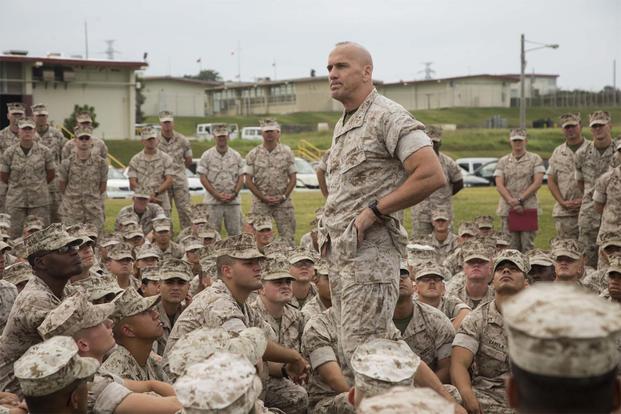With uncertain new leadership in allied countries and the sabre-rattling of hostile states growing louder, Marines in the Pacific are being prepared for a coming conflict, the commanding general of 3rd Marine Division said this week.
Speaking at Marine Corps Association's Ground Dinner near Washington, D.C., Thursday night, Maj. Gen. Richard Simcock made a plea for more amphibious ships in the region and increased collaboration with the Navy as the region braces anticipates a future that may include a confrontation or contingency involving a powerful regional competitor.
"The fight that's coming, we're not going to be able to get a hodgepodge, hillbilly organization and just throw three [Marine Expeditionary Units] together and say that's a [Marine Expeditionary Brigade] and we can land the landing force," he said. "We're not training with our Navy brethren; we're not doing the things that are going to carry us to victory in the fight that is clearly coming out of the Pacific. Those are the biggest issues that I deal with right now."
Recent upheavals in the region, he said, included the death in October of the 88-year-old king of Thailand, Bhumibol Adulyadej, a beloved ruler who leaves an uncertain political future in his son, the crown prince Maha Vajiralongkorn. Meanwhile, the newly elected Philippine president, Rodrigo Duterte, who took office in June, has repeatedly made headlines with his hostility toward the U.S. and insults and rebukes to President Barack Obama.
"The things that we did in the Philippines and things like Balikatan are in question," Simcock said, naming a major U.S.-Philippines exercise held in the spring and taking its name from the Tagalog word for "shoulder-to-shoulder." This year's exercise involved 5,000 U.S. troops. Duterte said in September that he wanted to end all joint war games with the U.S., with next spring's Balikatan being the last.
"If there such a thing as key terrain, the Philippines is it," Simcock said. "This archipelago of seven thousand islands is critical to us."
North Korea, a longtime source of instability in the region, is "popping off nuclear missiles like it's cool," Simcock said. "Our South Korean allies, it's all we can do to say, 'don't go.' Maybe they need to go."
All this comes as one of the largest powers in the region, China, has added infrastructure to contested islands in the South China sea in what Navy Adm. Harry Harris, the head of U.S. Pacific Command, has called a clear act of militarization.
While Simcock said he works with new seabasing platforms, designed to be a stopgap as the Navy and Marine Corps grapple with a shortage of available amphibious ships, they lack the combat survivability and many of the troop-carrying features of traditional amphibious ships.
"What if I had four or five ships that we dedicated to the division and the combat power that we could bring to bear at the place and time of our choosing?" he said.
Despite the challenges, Simcock said the Marines under his command would be prepared to take on any mission.
"Our commandant [Gen. Robert Neller], when he came out, he looked at me and said, 'the fight is coming. I looked at him and said, 'Commandant, you're absolutely right,'" Simcock said. "He said, 'Richard, your boys ready? I said, 'absolutely they're ready, no doubt about it.'"
-- Hope Hodge Seck can be reached at hope.seck@military.com. Follow her on Twitter at @HopeSeck.



























